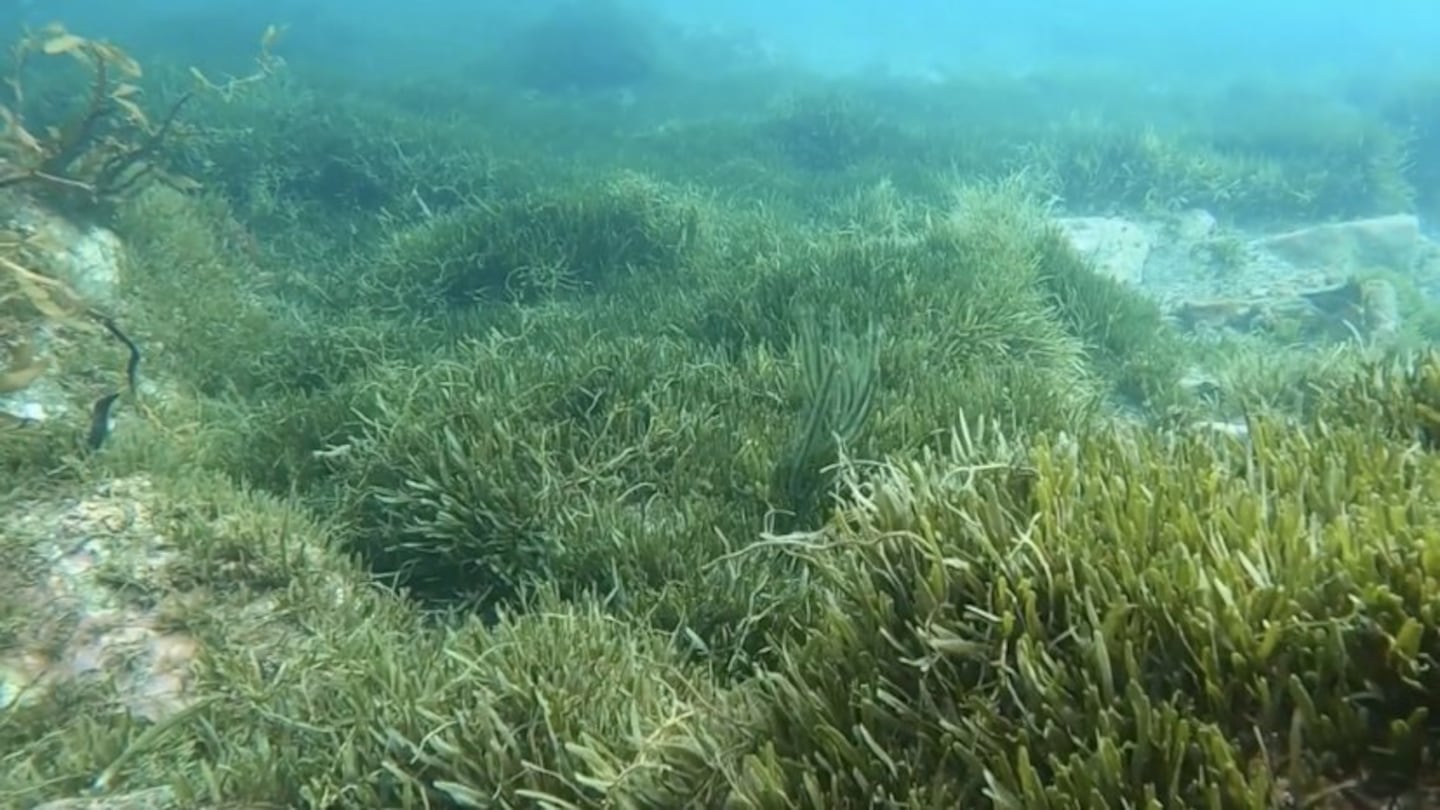Caulerpa brachypus engulfed the ocean floor of several bays on Aotea, Great Barrier Island in 2021. Photo / NIWA
Biosecurity New Zealand says it's taking immediate action following the discovery of patches of exotic Caulerpa seaweed near Te Kawau Tūmaro ō Toi Kawau Island in the Tāmaki Auckland region, according to Response Director John Walsh.
"We've talked to the Ngāti Manuhiri Settlement Trust and the Auckland Council today and will meet with them next week. With their agreement, we plan to begin some control work as soon as possible as well as further surveillance in the area," Walsh says.
"Ngāti Manuhiri Settlement Trust are committed to protecting our rohe moana and putting all efforts to remove and eradicate the invasive pest from our beautiful waters," says Ngāti Manuhiri Settlement Trust's Chief Executive, Nicola MacDonald.
Biosecurity New Zealand is considering the use of chlorine pellets beneath tarpaulins or suction dredging to remove the seaweed, according to Walsh.
"Divers found small 20-30cm patches of the seaweed in the North Channel northwest of Kawau. Finding exotic Caulerpa in another area of Tāmaki is disappointing but not unexpected given the nature of the seaweed," he added.
"Caulerpa can easily be spread to new locations as it's commonly caught up as tiny pieces of seaweed on vessel anchors and fishing gear,"
For the past two years, Biosecurity New Zealand has been working with partners, including mana whenua, local authorities, and communities, to address exotic Caulerpa on Aotea, Great Barrier Island, and earlier this year in Te Tai Tokerau.
Rāhui have been laid in several bays in both locations in an attempt to stop the spread of the invasive weed.
"This has been a sustained, thorough, and collaborative effort to contain Caulerpa to known locations, better understand the pest and its challenges, trialling treatments, and working to prevent its spread," explains Walsh.
Caulerpa brachypus wreaks havoc on marine environments by rapidly spreading and outcompeting native flora, leading to a decline in biodiversity and disrupting the delicate balance of the ecosystem.
It has caused significant destruction in marine environments around the world, including coastal areas in the Mediterranean Sea, Australia's Great Barrier Reef, and parts of the Indian Ocean.
Above: Footage from Aotea, Great Barrier's Blind Bay where Caulerpa brachypus was discovered in 2021 and Rāhui was rolled out across much of the west coast including Tryphena and Katherine Bay, in an attempt to contain and rid the motu of the invasive seaweed. Video / NIWA
Walsh acknowledges the difficulty of dealing with exotic Caulerpa, stating, "Internationally, Caulerpa has not been successfully eradicated from areas the size of the finds in New Zealand, and climate change and warming oceans also present a tough biosecurity challenge for everyone."
To prevent the spread of exotic Caulerpa he urges all marine users to be vigilant by keeping their boats and aquatic equipment clean and checking for any seaweed on gear.
If exotic Caulerpa is suspected, people are encouraged to note the location, take a photo, and report it to Biosecurity New Zealand.
More details can be found at Biosecurity New Zealand's webpage at www.biosecurity.govt.nz/caulerpa.



